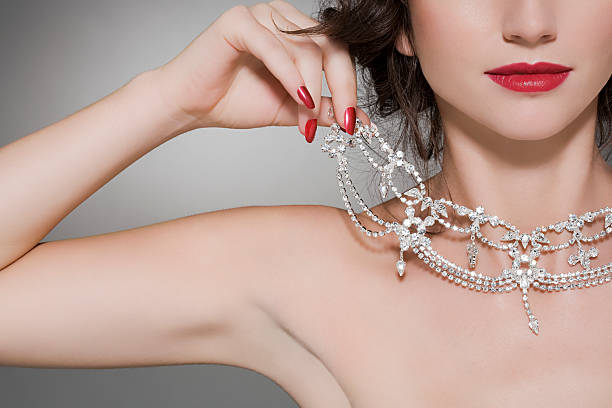How to Judge the Quality of Diamonds All Entries

Every diamond lover has their own personal way of judging the quality of their gems. Some people are attracted to the sparkle and beauty, while others collect unique specimens based on the cut and clarity. But there's only one professionally-accepted way to determine the quality of diamonds if you plan on buying or selling them at a fair price. You'll need a Diamond Report from a gemologist certified by the Gemological Institute of America (GIA).
How is Diamond Quality Measured?
GIA established its globally-used diamond grading scale in the 1950s. The entire jewelry industry uses GIA's grading scale consisting of the following "4Cs" for evaluating the quality of diamonds:
- Color - The highest quality diamonds are colorless. The more color the stone has, the lower its quality. Consequently, colored diamonds aren't as valuable as colorless diamonds. GIA grades colors with letters D through Z, with D being colorless and the highest grade.
- Cut - Diamond cuts are considered excellent if light easily reflects off the stone's facets. Ideal cuts are neither shallow nor deep. Inevitably, cut quality reflects the skills of the designer. Cut grades are expressed as excellent, very good, good, fair and poor. Unique cuts can attract collectors from around the world and hold higher value than generic cuts.
- Clarity - Inclusions are the imperfections in a diamond that reduce clarity. A diamond with no visible or minimal inclusions is considered much higher quality than one with multiple obvious inclusions. The more inclusions the gem has, the more it will reduce brilliance and value. The eleven clarity grades are based on number of inclusions with the best grade being "F" for "flawless," which is rare.
- Carat - The weight of a diamond, expressed in carats, is usually the most crucial factor in determining diamond quality and value. Gemologists must use objective observation when evaluating carat weight. This measurement is expressed in whole numbers and fractions below 1 through 5. A one-carat diamond is equivalent to weighing .2 or 1/5 grams.
Issues that Affect the Quality of Diamonds
The 4Cs are more of a starting point for a gemologist to evaluate the quality of diamonds. The gemologist must consider other related factors as well such as the age of the gem, its authenticity, origin and condition. Even though carat weight has the most impact on quality and value, if the gem is not in good condition, it will offset other factors. Visible scratches and chips significantly lower the quality and value.
The cut must be done with precision in order to display desired brightness and fire. A well-cut diamond by a professional designer generates a beautiful sparkle, whereas a poorly-cut diamond looks dull. Additionally, professional gemologists grade diamond quality on polish, symmetry, fluorescence and clarity characteristics.
Conclusion
Diamonds have great sentimental value because they symbolize ideas people imagine about power and beauty. But in order to know their objective market value, you must turn to scientific grading measurements established by GIA. Contact us at Ralph Mueller & Associates for deeper information on evaluating the quality of diamonds.